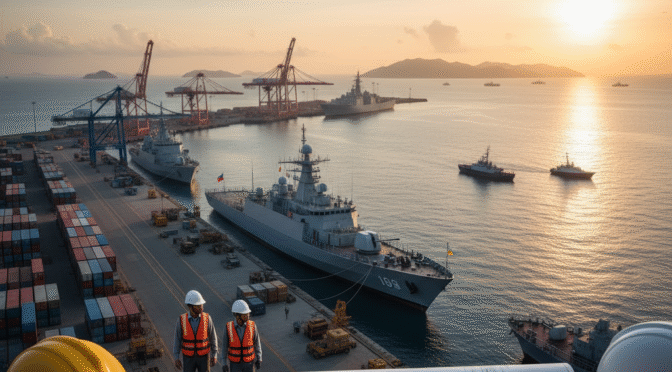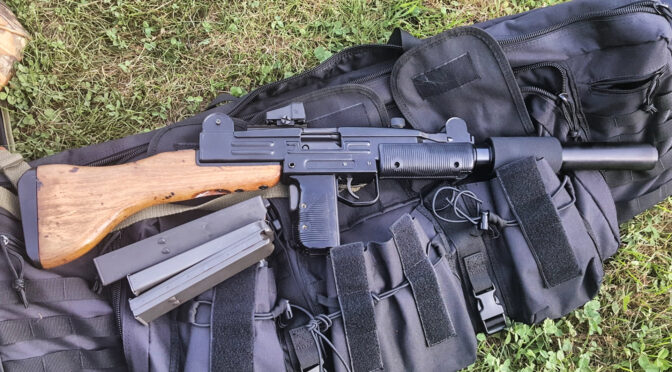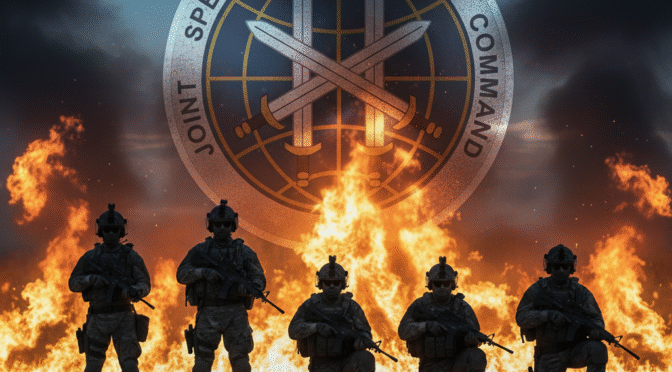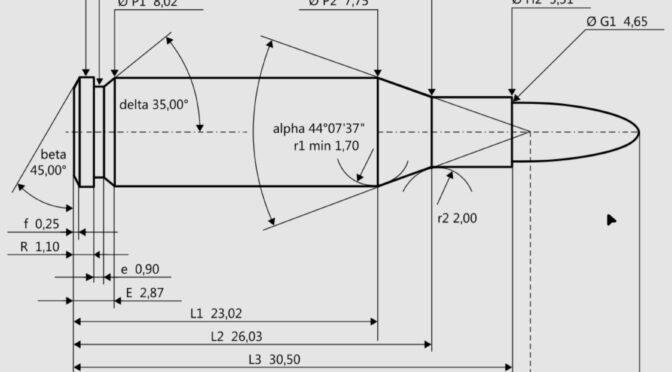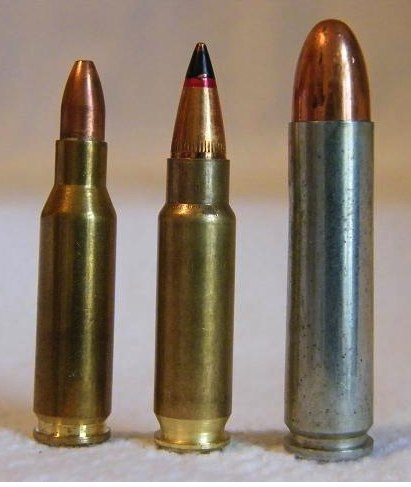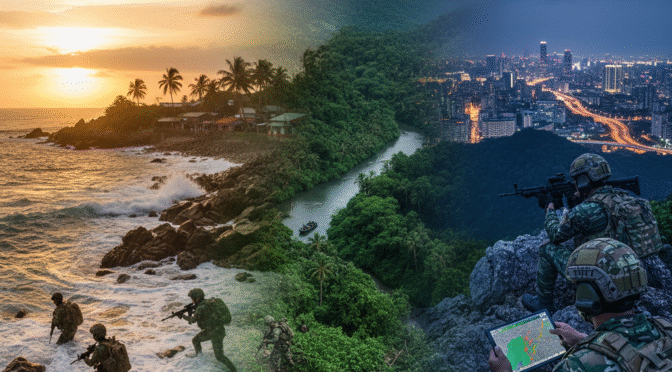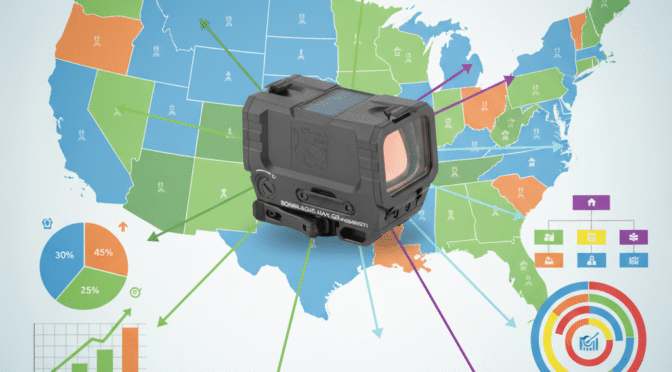This post was generated on October 31st, 2025.
The Republic of the Philippines is executing a generational strategic pivot, shifting its national security doctrine from internal security to external territorial defense. This shift, driven by escalating geopolitical tensions in the South China Sea and proximity to potential flashpoints like Taiwan, has unlocked a wave of defense and infrastructure investment from the Uniteded States, South Korea, Japan, Australia, and other allies.1
This investment surge is underpinned by two parallel engines:
- Allied & Domestic Defense Funding: A revitalized framework of treaties and agreements—notably the U.S. Enhanced Defense Cooperation Agreement (EDCA)—is channeling hundreds of millions of dollars into Philippine military base construction and modernization.3 Concurrently, the Philippines’ domestic “Re-Horizon 3” military modernization program outlines a 10-year, USD 35 billion ambition to acquire modern platforms, with a political push to increase defense spending to 2.0% of GDP by 2028.6
- A Resilient, Liberalizing Economy: This defense boom is backstopped by one of Southeast Asia’s fastest-growing economies, with GDP growth forecast to average ~6.0% through 2028.8 Crucially, the government has strategically liberalized key infrastructure sectors. The 2022 amended Public Service Act (PSA) now permits 100% foreign ownership of telecommunications, logistics, airports, and power—the very sectors required to support a 21st-century military network.11
This report projects a 3-year (2026-2028) opportunity matrix. The analysis indicates that while high-profile platform sales (Tier 1) are significant, the most scalable and immediate opportunities for private enterprise lie in Tier 2: defense-adjacent infrastructure. This includes allied-funded construction at EDCA sites, strategic logistics at hubs like Subic Bay, and 100% foreign-ownable investments in the dual-use power and telecommunications backbones required by these new strategic bases.14
The market is bifurcated by regulation: the defense sector (manufacturing, MRO) is restricted by a 40% foreign ownership cap, mandating Joint Ventures.17 In contrast, the critical support infrastructure market has been intentionally opened to 100% foreign control. This high-risk, high-reward environment demands a sophisticated, multi-track market entry strategy that aligns with the Philippines’ new “deterrence by entanglement” doctrine and its parallel economic liberalization.
Part 1: The New Strategic Calculus: Geopolitics & Defense Budgets
1.1 The Indo-Pacific Fulcrum: A New Era of External Deterrence
The fundamental driver of the Philippine investment surge is a clear and dramatic shift in its national threat perception. Under the administration of President Ferdinand Marcos Jr., the Philippines has pivoted from a decades-long focus on internal security and counter-insurgency to a new doctrine prioritizing external deterrence and territorial defense.1
This strategic pivot is a direct response to two primary geopolitical drivers:
- The South China Sea (SCS) Conflict: The Philippines faces escalating “gray-zone” tactics and direct aggression from Chinese maritime forces, which contest Philippine sovereignty within its own Exclusive Economic Zone (EEZ).19 China’s expansive “Nine-Dash Line” claim, which was legally invalidated by a 2016 arbitral tribunal, continues to be enforced through military and coast guard actions.19 With an estimated USD 3.36 trillion in global trade passing through the SCS annually, the security of these shipping lanes is a core interest for the Philippines and its allies, including the United States.23
- The Taiwan Contingency: The northernmost provinces of the Philippines, particularly Cagayan, are in close geographic proximity to Taiwan.25 This geography makes the Philippines an indispensable part of the regional security architecture in any potential Taiwan Strait conflict. This proximity is a primary factor in the selection of new military base locations for allied cooperation.25
The previous administration’s (2016-2022) diplomatic outreach to Beijing is now widely viewed as having failed to de-escalate these threats.1 In response, the Marcos government is pursuing a strategy of “deterrence by entanglement.” This strategy involves actively revitalizing, integrating, and operationalizing its security partnerships to make the Philippines a more capable and interconnected ally, thereby raising the political and military cost of any aggression against it.
1.2 The Allied Investment Framework: A Minilateral Convergence
The Philippine strategy is not reliant on a single partner. Instead, it is actively fostering a “networked” security architecture, creating a convergence of investment and cooperation from multiple allied nations.2
- United States (The Cornerstone): The 1951 Mutual Defense Treaty (MDT) remains the bedrock of the relationship.19 This is now being operationalized through the 2014 Enhanced Defense Cooperation Agreement (EDCA), which provides the legal framework for a rotational U.S. troop presence and, critically, U.S. funding for the construction and modernization of Philippine military bases.5 This framework is backed by substantial U.S. capital, including:
- Over USD 1.033 billion in active Foreign Military Sales (FMS) cases.28
- A USD 500 million defense assistance package.2
- A USD 128 million request in the FY2025 Pentagon budget specifically for EDCA infrastructure projects.3
- A newly signed General Security of Military Information Agreement (GSOMIA), which secures the exchange of classified data and enables the transfer of high-end defense technology, such as the F-16 platform.31
- South Korea (The Prime Contractor): The Republic of Korea (ROK) has emerged as a crucial, cost-effective, and reliable supplier of modern military platforms.6 Philippine Defense Secretary Gilberto Teodoro has stated that Korean-built systems, including frigates and FA-50 fighter jets, form the “backbone” of the Armed Forces of the Philippines’ (AFP) current capabilities.33 Recent major deals include a USD 700 million contract for 12 additional FA-50 light combat aircraft 33 and contracts for modern frigates and patrol vessels.6
- Japan (The Strategic Neighbor): A powerful new security partnership is forming. In a historic first, Japan is transferring finished defense equipment—four air surveillance radar systems—to the Philippine Air Force.36 The two nations are also in advanced negotiations for a Reciprocal Access Agreement (RAA) (also known as an Acquisition and Cross-Servicing Agreement, or ACSA).39 This treaty-level agreement will facilitate joint training and operations and allow Japanese forces to utilize Philippine bases.
- Australia (The Interoperable Partner): The bilateral relationship was elevated to a “Strategic Partnership” in 2023.41 This is being manifested in a significant increase in joint training activities.41 Furthermore, a new defense pact is being finalized that will, similar to EDCA, allow Australia to “construct, use, upgrade and maintain” defense infrastructure at select Philippine military sites.4
These “minilateral” relationships are being formalized through multilateral actions, including the first-ever five-country Defense Ministers’ meeting (US, ROK, Japan, Australia, Philippines) 43 and quadrilateral maritime patrols in the South China Sea.20 For businesses, the convergence of U.S., Japanese, and Australian investment in the same physical locations (the EDCA sites) creates a complex but highly lucrative opportunity for construction, engineering, and logistics firms that can navigate multi-national procurement systems and standards.
1.3 The Re-Horizon 3 Mandate: Quantifying the Market
The primary domestic demand signal for these investments is the AFP Modernization Program. In January 2024, President Marcos approved a revamped “Re-Horizon 3,” a 10-year program with a headline budget of USD 35 billion (approximately PHP 2 trillion).6
This program signals the definitive shift from internal to external defense.1 Its priorities are “long-range capabilities,” “air defense systems,” and “strategic basing infrastructure”.7 This is reinforced by the “Self-Reliant Defense Posture” (SRDP) Act, which encourages the development of a domestic defense-industrial base through technology transfer and joint ventures.6
This ambition is backed by strong political will, with the Philippine Senate finance committee chair vowing to increase annual defense spending from its current level of ~1.19% of GDP to the NATO standard of 2.0% of GDP by 2028.7
However, a sober analysis of the Philippine fiscal process is required. The USD 35 billion figure is a 10-year ambition, not a fully funded appropriation.
- Legacy Delays: Several modernization projects from the previous Horizon 1 and 2 phases remain incomplete due to funding delays.48
- Budget Risk: The FY 2026 budget for AFP Modernization, while increasing 20% to PHP 90 billion (approx. USD 1.5 billion), illustrates the risk. Of this amount, PHP 40 billion is classified as “Unprogrammed Appropriations,” meaning the funds are not guaranteed and are contingent on excess government revenue.49
This fiscal reality creates a bifurcated market.
- 1. Major Platform Acquisitions: Large, multi-billion dollar procurements like the proposed USD 5.6 billion F-16 deal 31 will be politically protected but are long-cycle opportunities funded via Government-to-Government (G2G) loans or Foreign Military Sales (FMS).28
- 2. Agile Capability Sales: Smaller, lower-cost, and high-tech capabilities (e.g., cybersecurity, C4ISTAR, UAVs) are better suited for Direct Commercial Sales (DCS).28 These can be funded from the more reliable programmed portion of the annual budget, offering a faster and more accessible market for entrepreneurial firms.
Part 2: The Philippine Market Environment: A Dual-Engine Economy
2.1 Macroeconomic Projections (2026-2028): The Growth Backdrop
The surge in defense spending is occurring against the backdrop of one of Asia’s most dynamic and resilient macro-economic environments. The Philippines is forecast to remain one of the fastest-growing economies in Southeast Asia, driven by strong domestic demand, robust remittances, and sustained infrastructure investment.8
- GDP Growth: Economic forecasts from multilateral institutions are consistently strong.
- The World Bank projects robust growth averaging 6.0% over 2024-2026.9
- The Asian Development Bank (ADB) projects 6.0% growth in 2025 and 6.1% in 2026.8 A separate ADB report projects 5.7% in 2026.54
- The Philippine government’s Development Budget Coordination Committee (DBCC) targets a growth band of 6.0% to 7.0% for 2026-2028.10
- Inflation: After recent spikes, inflation is stabilizing and forecast to remain within the central bank’s (BSP) target band of 2.0% to 4.0%.8 The ADB forecasts 3.0% for 2025-2026 8, while the IMF projects 1.6% in 2025 and 5.7% in 2026.56
- Foreign Direct Investment (FDI): Overall FDI inflows, while stable at USD 8.9 billion in 2024 17, have lagged regional peers.59 However, recent data from the Bangko Sentral ng Pilipinas shows that key defense allies—Japan, the United States, and South Korea—are consistently among the top sources of FDI equity capital.60
- Investment Climate: Despite this positive outlook, significant challenges remain. The business environment is hampered by a “complex, slow… and sometimes corrupt judicial system” 17, regulatory inconsistencies, high power costs, and logistical bottlenecks.59
Table 1: Philippine Macroeconomic & Defense Budget Forecast (2025-2028)
| Indicator | 2025 (Forecast/Proposed) | 2026 (Forecast/Proposed) | 2027 (Forecast) | 2028 (Target) |
| Real GDP Growth | 5.5% – 6.5% | 6.0% – 7.0% | 6.0% – 7.0% | 6.0% – 7.0% |
| Inflation Rate | 2.0% – 3.0% | 2.0% – 4.0% | 2.0% – 4.0% | 2.0% – 4.0% |
| USD/PHP Exchange Rate | 55 – 58 | 55 – 58 | 55 – 58 | 55 – 58 |
| National Government Budget | PHP 6.326 Trillion | PHP 6.793 Trillion | N/A | N/A |
| Total Defense Budget | PHP 378.9 Billion | PHP 430.9 Billion | N/A | N/A |
| AFP Modernization Budget (Total) | PHP 75.0 Billion | PHP 90.0 Billion | N/A | N/A |
| … (Programmed) | PHP 35.0 Billion | PHP 50.0 Billion | N/A | N/A |
| … (Unprogrammed) | PHP 40.0 Billion | PHP 40.0 Billion | N/A | N/A |
| Defense Spending as % of GDP | ~1.19% (Actual) | ~1.3% (Projected) | N/A | 2.0% (Target) |
7
2.2 The Regulatory Landscape: A Strategic Bifurcation
For foreign investors, the Philippine market is defined by a critical and deliberate regulatory split. The government has strategically “walled off” direct defense manufacturing while simultaneously prying open the critical infrastructure sectors needed to support it.
- The Barrier: The Foreign Investment Negative List (FINL)
The FINL outlines all sectors where foreign ownership is restricted by law.17 For the defense industry, the key restriction is a 40% cap on foreign equity in the “manufacturing of explosives, firearms, and military hardware”.17 This restriction legally forces any foreign defense contractor wishing to co-produce, assemble, or establish in-country Maintenance, Repair, and Overhaul (MRO) to do so via a Joint Venture (JV) with a 60% Filipino-owned partner. This aligns perfectly with the SRDP Act’s goal of using JVs to facilitate technology transfer to a local industrial base.6 - The Opportunity: The Amended Public Service Act (PSA)
This 2022 reform is a game-changer for defense-adjacent industries.68 The law re-classified several key industries, removing them from the constitutionally-limited “public utility” category (which also had a 40% foreign ownership cap). As a result, the following sectors are now open to 100% foreign ownership:
- Telecommunications 12
- Railways
- Airports 68
- Shipping and Logistics 12
This liberalization is not a coincidence. The Philippine government and its allies cannot build a 21st-century, networked military force (Re-Horizon 3) or operate from strategic bases (EDCA) using the country’s existing and oft-criticized infrastructure.59 The amended PSA, supplemented by new laws like the Konektadong Pinoy Act to accelerate data transmission infrastructure 16, is a direct invitation to foreign capital to build and own the dual-use backbone that the AFP and its allies will depend on. This creates a high-growth, non-FINL-restricted, and scalable market for infrastructure funds, telecom operators, and logistics giants.
2.3 The Base Effect: Local Economic Ecosystems
The defense investment is not abstract; it is geographically focused, creating “micro-economies” around nine specific military hubs designated under the Enhanced Defense Cooperation Agreement (EDCA).5
The 9 EDCA Sites:
- Northern Luzon (Taiwan/SCS-facing): Naval Base Camilo Osias (Cagayan), Lal-lo Airport (Cagayan) 5, and Camp Melchor Dela Cruz (Isabela).
- South China Sea / Palawan-facing: Antonio Bautista Air Base (Palawan) and Naval Station Narciso del Rosario (Balabac Island, Palawan).5
- Training & Logistics Hubs: Basa Air Base (Pampanga) and Fort Magsaysay (Nueva Ecija).70
- Central/South Hubs: Benito Ebuen Air Base (Cebu) and Lumbia Airport (Cagayan de Oro).70
The Philippine and U.S. governments have framed these sites as drivers of “economic growth and job creation” 72 and as crucial hubs for humanitarian assistance and disaster response (HADR).5 However, this narrative is not without risk. The sites face political opposition from groups concerned about resource drains on local communities (e.g., water and electricity) 73 and the risk of pulling the Philippines into a direct U.S.-China conflict.25
For entrepreneurs and investors, this dynamic creates a clear path to gaining a “social license to operate.” The most successful and politically resilient projects will be those that actively support the government’s dual-use narrative. An investment in a new warehouse, for example, is more likely to succeed if it is framed as a “Dual-Use Disaster Response Hub” (serving military logistics and civilian relief storage) rather than purely as a military facility.
Table 2: Strategic Infrastructure Hubs: Key EDCA Sites & Locations
| Location (Base & Province) | Strategic Significance | Identified Projects & Funding (U.S., AUS, JP) | Key Opportunities (2026-2028) |
| Basa Air Base (Pampanga) | Logistics Hub; Fighter Base | USD 32M parking apron; USD 25M runway rehab; U.S. total >USD 66M [14, 77, 78] | Runway/taxiway construction, fuel storage, command facilities, MRO facilities |
| Fort Magsaysay (Nueva Ecija) | Logistics Hub; Training Area | USD 11.4M+ allocated.78 Warehousing & training facilities [71] | Warehouse construction, training/simulation centers, logistics services |
| Lal-lo Airport (Cagayan) | N. Luzon; Taiwan Strait | Fuel storage & command center proposed 25 | Fuel depot (construction, operation), C2 facility, runway/apron upgrades |
| Naval Base Camilo Osias (Cagayan) | N. Luzon; Taiwan Strait | Airstrip repairs proposed 25 | Port/airstrip modernization, power/comms infrastructure |
| Antonio Bautista AB (Palawan) | South China Sea | USD 1.8M+ allocated.78 Boat maintenance facility 79 | Pier/port upgrades, maintenance facilities, maritime surveillance systems |
| Balabac Island (Palawan) | South China Sea | New site 5 | Port facilities, power generation, C4ISTAR infrastructure |
| Subic Bay (Zambales) | Strategic Logistics Hub | U.S. Navy solicitation for 25,000 sqm warehouse 15 | Warehouse (Build-Operate-Lease), ship repair (SRF), logistics & maintenance |
Part 3: Opportunity Matrix: A 3-Year Projection (2026-2028)
The confluence of allied investment, domestic modernization, and economic liberalization creates a multi-tiered opportunity set.
3.1 Tier 1: Direct Defense & Security (High-Priority Gaps)
These are high-end opportunities targeting the AFP’s most pressing capability gaps under Re-Horizon 3.6 They are primarily for established defense contractors and system integrators.
- A. C4ISTAR Integration (The “Nervous System”)
- The Gap: This is arguably the AFP’s single most critical deficiency. The military is acquiring modern platforms (jets, ships) but lacks the high-level, integrated network to connect them into a coherent force.47 The AFP is actively working to enhance its Command, Control, Communications, Computers, Information/Intelligence, Surveillance, Target Acquisition, and Reconnaissance (C4ISTAR) systems, but requires massive external support.82
- The Opportunity: A “system-of-systems” integrator. This includes supplying secure datalinks (like Link 16), sensor fusion centers, battlefield management software, and the ISR platforms (such as the Hermes UAVs) that feed the network.6
- Timeframe: Immediate & Ongoing (2026-2028).
- B. Cybersecurity & Electronic Warfare (The “New Domain”)
- The Gap: The Philippines is one of the most cyber-attacked countries in Southeast Asia.84 The government’s new National Cyber Security Plan (2023-2028) creates a formal procurement framework to secure critical infrastructure.84 The Philippine Army has activated a new Cyber Battalion 86, but a significant skills gap remains.85
- The Opportunity: Solutions for critical infrastructure protection, cyber defense for new platforms (F-16s, frigates), and electronic warfare (EW) systems, which are part of the F-131 package.31 Joint allied cyber exercises 87 will accelerate demand for tools and professional training and certification.
- Timeframe: High-Growth (2026-2028).
- C. Multi-Role Platforms & In-Country MRO
- The Demand: These are the big-ticket items defining Re-Horizon 3.
- Air: A potential USD 5.6 billion FMS case for 16-20 F-16 Block 70/72 aircraft.31 A contracted USD 700 million G2G deal for 12 more FA-50 Block 20s from South Korea.33
- Sea: Contracts for new frigates and corvettes from South Korea 6 and patrol boats from Japan.90
- The Opportunity (Long-Term): The “Self-Reliant Defense Posture” 6 and statements from suppliers like Lockheed Martin 89 and Korea Aerospace Industries (KAI) 91 point to the critical downstream opportunity: in-country Maintenance, Repair, and Overhaul (MRO) and sustainment. KAI has already signed a Performance-Based Logistics (PBL) agreement 91, and Elbit Systems has helped set up maintenance facilities for its land systems.92 This is the primary market for the 40% FINL-restricted Joint Venture.
- Timeframe: Procurement (2026-2027), MRO & Sustainment (2028+).
Table 3: Key AFP Procurement Pipeline (Re-Horizon 3)
| Domain | Platform / System | Supplier (Country) | Est. Value | Status | Key Opportunity |
| Air | Multi-Role Fighter (MRF) | Lockheed Martin (US) | USD 5.6 Billion | Proposed (FMS) | Platform MRO, simulation & training |
| Air | Light Combat Aircraft | KAI (ROK) | USD 700 Million | Contracted (G2G) | Platform MRO, PBL, parts supply |
| Air | Air Surveillance Radar | Mitsubishi (Japan) | N/A | Contracted | Sustainment, integration with C4I |
| Air/Land | Air Defense Systems | Various (Israel) | N/A | Contracted (Spyder) | C4I integration, follow-on buys |
| Sea | Frigates / Corvettes | HD HHI (ROK) | >USD 2.0 Billion | Contracted | Combat system integration, MRO |
| Sea | Submarines | N/A | N/A | Proposed | Platform, basing infrastructure, training |
| Joint | C4ISTAR Systems | Various | N/A | High-Priority | System integration, software, datalinks |
| Joint | Cybersecurity Systems | Various | N/A | High-Priority | Critical infra protection, training, tools |
3.2 Tier 2: Defense-Adjacent Infrastructure & Logistics
These are the most scalable, near-term, and (in many cases) liberalized opportunities. They are ideal for construction firms, logistics operators, and infrastructure funds.
- A. Base Construction & Modernization
- The Demand: This is an immediate, funded requirement. The U.S. alone has allocated over USD 100 million 5 and has USD 128 million in the FY2025 budget request for EDCA construction.3 Australia is also planning to fund and build infrastructure.4
- The Opportunity: Prime and sub-contracting roles for specific, tendered projects, including:
- Basa Air Base (Pampanga): A USD 32 million contract for a parking apron (awarded to Acciona CMS Philippines) 14 and a USD 25 million runway rehabilitation.78
- Fort Magsaysay (Nueva Ecija): Construction of training and warehouse facilities.71
- Lal-lo Airport (Cagayan): Proposed construction of a fuel storage facility and command center.25
- Palawan: A new boat maintenance facility.79
- Timeframe: Immediate (2026-2027).
- B. Strategic Logistics & Warehousing
- The Demand: A specific, massive logistics requirement has been publicly identified. The U.S. Navy has issued solicitations for a 25,000-square-meter climate-controlled warehouse and maintenance shop at the Subic Bay Freeport Zone, with a lease start planned for 2026.15
- The Opportunity: This is a specific, actionable RFP. It represents a major anchor-tenant opportunity for a logistics or real estate developer. Establishing this hub at Subic’s strategic deep-water port creates a platform to service the entire region and the nearby EDCA sites in Pampanga and Cagayan.
- Timeframe: Immediate (2026).
- C. Critical Infrastructure (PSA-Liberalized)
- The Demand: The new military hubs in relatively undeveloped areas (e.g., Cagayan, Balabac Island) 5 will be high-volume consumers of stable power and high-speed data. The existing grid is insufficient.
- The Opportunity (100% Foreign-Owned):
- Energy: Build, own, and operate new power generation (renewable-powered microgrids) to provide high-reliability power to bases and surrounding communities.
- Telecommunications: Leverage the amended PSA 12 and new Konektadong Pinoy Act 16 to build, own, and operate fiber optic backbones, 5G towers, and secure data centers to service both military and civilian needs.
- Timeframe: Mid-Term (2027-2028).
3.3 Tier 3: Ancillary & Localized Services
These are localized, service-based opportunities catering to the new “base effect” economies.
- A. Services for Rotational Forces
- The Demand: A sustained and increasing rotational presence of U.A_S_. 25, Australian 4, and (post-RAA) Japanese forces.39
- The Opportunity: Base Operations Support (BOS) contracts, real estate and housing, transportation, food supply chains, and other services. These are often smaller, locally-competed contracts well-suited for agile entrepreneurial ventures.93
- Timeframe: Ongoing (2026-2028).
- B. Training & Simulation
- The Demand: The AFP is acquiring complex, expensive-to-operate platforms like the F-16 and modern frigates. This creates an urgent need for advanced, cost-effective training solutions.
- The Opportunity: Supplying air combat simulators (for F-16/FA-50), maritime bridge and combat system simulators, and “live-virtual-constructive” (LVC) training systems to link joint exercises.
- Timeframe: Mid-Term (2027-2028).
Part 4: Market Entry Strategy & Risk Analysis
4.1 Recommended Entry Models: A Three-Track Approach
Navigating the bifurcated regulatory landscape requires a flexible, multi-track entry strategy.
- 1. Joint Venture (JV):
- Why: This is the only legal pathway for opportunities inside the 40% Foreign Investment Negative List cap.17
- Applicable Sectors: Tier 1 (Defense MRO, co-production, assembly) and Tier 3 (land ownership for real estate).
- Strategy: Partner with a large, established Filipino conglomerate. This provides not only the 60% local equity but, more importantly, the political and bureaucratic relationships necessary to navigate the system.
- 2. Wholly-Owned Subsidiary (100% Foreign):
- Why: This is the high-growth path created by the amended Public Service Act.11
- Applicable Sectors: Tier 2 (Telecommunications, Logistics, Airports, Power Generation, large-scale construction, and the Subic Bay warehouse operation).
- Strategy: This is the ideal model for infrastructure funds, large multinational logistics firms, and telecom operators. It allows full control of capital, operations, and cash flow in a newly liberalized, high-demand market.
- 3. Government-to-Government (G2G) / Foreign Military Sales (FMS):
- Why: This is the preferred procurement method for the Philippine government for large, strategic, high-cost platforms.51
- Applicable Sectors: Tier 1 (F-16s, frigates, submarines).28
- Strategy: This is a long-term, relationship-based play. The business opportunity lies in lobbying the supplier’s own government (e.g., in Washington D.C., Seoul, Tokyo) to have its product prioritized in allied defense financing and sales packages.
4.2 Risk Assessment & Mitigation
- A. Geopolitical Risk (High):
- Risk: An actual military skirmish with China in the South China Sea.21 Such an event could halt all commercial activity, disrupt shipping, and place investments at risk.
- Mitigation: This is a systemic, un-hedgeable risk. Investors must price this “geopolitical premium” into their financial models and recognize they are investing in a “hot” region.
- B. Political & Social Risk (Medium-High):
- Risk: Local political opposition to EDCA sites, which can cause project delays.73 A future administration (post-2028) could reverse the current pro-alliance pivot.
- Mitigation: The “Dual-Use” & “Social License” strategy is the best mitigation. Frame all investments as jointly benefiting civilian needs (disaster relief, jobs, community infrastructure) and military requirements. This builds local support and makes the project more resilient to political change.
- C. Operational & Bureaucratic Risk (High):
- Risk: Project delays due to slow bureaucracy 17, corruption 59, or, most critically, unstable annual funding for the AFP Modernization Program’s “unprogrammed” budget.48
- Mitigation:
- Partnering: A strong local JV partner is the best mitigation for bureaucratic and political navigation.
- Focus: Target opportunities funded by allied capital (e.S_S., U.S. FMF, PDI, Australian/Japanese aid) 3 or private capital (in the PSA-liberalized sectors). These funding streams bypass the volatile Philippine congressional appropriations process, offering far greater financial certainty.
4.3 Concluding Outlook: A High-Risk, High-Reward Strategic Market
The Philippines presents a rare convergence: a high-growth emerging economy overlaid with a defense-driven, allied-funded infrastructure boom. The risks are not insignificant, rooted in direct geopolitical tensions and chronic domestic bureaucratic friction. However, the Marcos administration’s strategic, dual-pronged regulatory reform—restricting direct defense while fully liberalizing support infrastructure—has created a clear and actionable roadmap for foreign capital.
The most astute investors will bypass the crowded, restricted, and high-stakes “spear” market (weapons platforms) and instead focus on building and owning the “shaft”: the liberalized, 100%-ownable, dual-use ports, power grids, and data networks that will form the backbone of Philippine 21st-century security and its broader economy.
Table 4: Opportunity & Market Entry Matrix (2026-2028)
| Tier | Opportunity Area | Opportunity Summary | Key Drivers | Timeframe | Primary Customer | Regulatory Hurdle | Recommended Entry |
| T1 | C4ISTAR Integration | AFP datalink & sensor fusion | Re-Horizon 3; Platform interoperability | 2026-2028 | AFP, DND | 40% FINL Cap (if hardware) | JV or Direct Sale |
| T1 | Cybersecurity & Training | Critical infra protection; tools & certs | National Cyber Security Plan; Army Cyber Bn. | 2026-2028 | AFP, DND, DICT | None (Services) | Wholly-Owned |
| T1 | Platform MRO | In-country sustainment for F-16, FA-50, Frigates | SRDP Act; PBL Contracts; FINL | 2027-2028+ | AFP, DND | 40% FINL Cap | Joint Venture |
| T2 | EDCA Base Construction | Runways, fuel depots, warehouses | U.S. PDI/FMF ($128M+); AUS/JP funds | 2026-2027 | U.S. NAVFAC; AFP | None (Contractor) | Wholly-Owned |
| T2 | Strategic Logistics | Subic Bay warehouse (25,000 sqm) | U.S. Navy solicitation; EDCA logistics | 2026 | U.S. Navy (Lessee) | None (PSA) | Wholly-Owned |
| T2 | Telecoms/Fiber (PSA) | Fiber backbone & 5G for new bases | Amended PSA; Konektadong Pinoy Act | 2027-2028 | AFP, Allies, Civilian | None (100% Open) | Wholly-Owned |
| T2 | Energy/Microgrids (PSA) | Stable power for bases (e.g., Cagayan) | Amended PSA; Base power needs | 2027-2028 | AFP, Allies, Civilian | None (100% Open) | Wholly-Owned |
| T3 | Services (Rotational) | Base Ops Support (BOS), housing | US, AUS, JP rotational forces | 2026-2028 | Allied Forces | Varies | Local Partner / JV |
| T3 | Training & Simulation | F-16 / FA-50 / Frigate simulators | High cost of live training; new platforms | 2027-2028 | AFP (Air Force, Navy) | 40% FINL Cap (if hardware) | JV or Direct Sale |
Appendix: Research Methodology
This report was produced using a multi-disciplinary analytical framework that integrates four distinct perspectives: military strategy, foreign affairs, business analysis, and entrepreneurship. The methodology followed a five-phase process to synthesize disparate data points into a coherent, forward-looking opportunity analysis.
1. Geopolitical & Strategic Framework Analysis
- Objective: To establish the foundational driver of the investment trend.
- Process: This phase, led by the military and foreign affairs perspective, analyzed the “why” behind the Philippines’ strategic pivot. It involved assessing the shift from internal security to external defense, identifying the primary threat drivers (South China Sea, Taiwan contingency), and mapping the network of allied “minilateral” agreements (EDCA, RAA, Strategic Partnerships) that form the legal and financial architecture for allied investment.
2. Market Quantification & Budget-Led Analysis
- Objective: To quantify the size and scope of the addressable market.
- Process: This business and military analysis phase “followed the money.” It involved a detailed examination of two primary funding streams:
- Domestic: The Armed Forces of the Philippines (AFP) Modernization Program, specifically the “Re-Horizon 3” USD 35 billion ambition and the risks embedded in the annual appropriations process (programmed vs. unprogrammed funds).
- Allied: Specific, publicly-announced funding from the U.S. (e.g., FMS cases, EDCA construction budgets) and major G2G contracts from partners like South Korea and Japan.
3. Dual-Market Economic & Regulatory Assessment
- Objective: To define the business environment and market access.
- Process: This phase, driven by the business analyst and entrepreneur perspective, identified the central thesis of the report: the strategic bifurcation of the market.
- The Barrier: Analysis of the Foreign Investment Negative List (FINL) to identify the 40% foreign ownership cap on direct defense manufacturing.
- The Gateway: Analysis of the 2022 amended Public Service Act (PSA) to identify the recent liberalization (100% foreign ownership) of critical, defense-adjacent sectors like telecommunications, power, and logistics.
This phase also established the macroeconomic backdrop (GDP, inflation) to confirm the economy’s underlying resilience.
4. Opportunity Matrix Synthesis
- Objective: To synthesize the “why” (Phase 1), “how much” (Phase 2), and “how” (Phase 3) into actionable business opportunities.
- Process: All four perspectives converged to create the “Tier 1-2-3” framework.
- Tier 1: (Military/Business) High-end defense capabilities matching Re-Horizon 3 gaps (C4ISTAR, MRO).
- Tier 2: (Entrepreneur/Business) Scalable infrastructure opportunities unlocked by the PSA (logistics, telecoms, base construction).
- Tier 3: (Entrepreneur) Localized, service-based “base effect” opportunities (BOS, training).
5. Risk & Entry Model Formulation
- Objective: To provide a realistic “so what” for investors and entrepreneurs.
- Process: This final phase assessed the primary risks (geopolitical, bureaucratic, social) and formulated specific market-entry strategies (JV, Wholly-Owned, G2G) that are directly aligned with the regulatory landscape identified in Phase 3. The “Dual-Use” narrative was identified as a key risk mitigation strategy.
Data Collection
Analysis was based entirely on open-source information, including: national budget documents from the Philippine government; official press releases and contract notifications from the U.S. Department of Defense, NAVFAC, and U.S. State Department; reports from allied defense ministries (Australia, Japan); announcements from defense contractors (e.g., KAI, Lockheed Martin); legislative summaries (e.g., PSA, FINL); macroeconomic forecasts from multilateral institutions (ADB, World Bank, IMF); and reporting from specialized defense, economic, and geopolitical news outlets.
If you find this post useful, please share the link on Facebook, with your friends, etc. Your support is much appreciated and if you have any feedback, please email me at in**@*********ps.com. Please note that for links to other websites, we are only paid if there is an affiliate program such as Avantlink, Impact, Amazon and eBay and only if you purchase something. If you’d like to directly donate to help fund our continued report, please visit our donations page.
Sources Used
- Riding Unruly Waves: The Philippines’ Military Modernisation Effort, accessed October 30, 2025, https://www.crisisgroup.org/asia-pacific/south-east-asia/philippines-china-united-states/349-riding-unruly-waves-philippines-military-modernisation-effort
- The US is helping the Philippines modernize its military – Defense One, accessed October 30, 2025, https://www.defenseone.com/policy/2024/08/us-helping-philippines-modernize-its-military/398549/
- Austin pledges $500M in security aid to Philippines amid uncertainty – Defense News, accessed October 30, 2025, https://www.defensenews.com/pentagon/2024/07/30/austin-pledges-500m-in-security-aid-to-philippines-amid-uncertainty/
- Australia Could Deploy Forces to Philippine Bases in New Agreement – USNI News, accessed October 30, 2025, https://news.usni.org/2025/08/26/australia-could-deploy-forces-to-philippine-bases-in-new-agreement
- Philippines, U.S. Announce Locations of Four New EDCA Sites – PACOM, accessed October 30, 2025, https://www.pacom.mil/Media/NEWS/Article/3350502/philippines-us-announce-locations-of-four-new-edca-sites/
- Philippines military modernisation: revamped but not resolved, accessed October 30, 2025, https://www.iiss.org/online-analysis/military-balance/2025/062/philippines-military-modernisation-revamped-but-not-resolved/
- ‘A stronger national defense builds a stronger economy’ | Philstar.com, accessed October 30, 2025, https://www.philstar.com/headlines/2025/10/10/2478736/a-stronger-national-defense-builds-stronger-economy
- Philippines to Remain a Bright Spot in Southeast Asia in 2025, 2026, accessed October 30, 2025, https://www.adb.org/news/philippines-remain-bright-spot-southeast-asia-2025-2026
- Philippines Economic Updates – World Bank, accessed October 30, 2025, https://www.worldbank.org/en/country/philippines/publication/philippine-economic-updates
- For the Fiscal Year 2026 – CPBRD, accessed October 30, 2025, https://cpbrd.congress.gov.ph/wp-content/uploads/2025/09/BB2025-07-AN-ANALYSIS-OF-THE-PRESIDENTS-BUDGETN-FOR-FY-2026.pdf
- Philippines – Allows 100 per cent foreign ownership of public services | Investment Policy Monitor, accessed October 30, 2025, https://investmentpolicy.unctad.org/investment-policy-monitor/measures/3794/philippines-allows-100-per-centforeign-ownership-of-public-services
- LATEST AMENDMENTS TO THE PUBLIC SERVICE ACT: DEFINING PUBLIC UTILITIES (Philippines) | Publications | Nagashima Ohno & Tsunematsu – 長島・大野・常松法律事務所, accessed October 30, 2025, https://www.noandt.com/en/publications/publication20220426-3/
- Philippines to allow 100% foreign ownership in further infrastructure sectors, accessed October 30, 2025, https://www.pinsentmasons.com/out-law/news/philippines-to-allow-100-percent-foreign-ownership-in-further-infrastructure-sectors
- U.S. Funding $32M Upgrade to Air Base in the Philippines – USNI News, accessed October 30, 2025, https://news.usni.org/2024/08/09/u-s-funding-32m-upgrade-to-air-base-in-the-philippines
- U.S. Navy Wants to Open Subic Bay Storage Facility in the Philippines – USNI News, accessed October 30, 2025, https://news.usni.org/2025/09/23/u-s-navy-wants-to-open-subic-bay-storage-facility-in-the-philippines
- Ready for Business: The Philippines Further Liberalizes Its Communications Sector | Insights | Sidley Austin LLP, accessed October 30, 2025, https://www.sidley.com/en/insights/newsupdates/2025/09/ready-for-business-the-philippines-further-liberalizes-its-communications-sector
- 2025 Investment Climate Statements: Philippines – U.S. Department of State, accessed October 30, 2025, https://www.state.gov/reports/2025-investment-climate-statements/philippines
- Philippines – Updates the Foreign Investment Negative List (FINL) | Investment Policy Monitor, accessed October 30, 2025, https://investmentpolicy.unctad.org/investment-policy-monitor/measures/4016/philippines-updates-the-foreign-investment-negative-list-finl-
- The US-Philippines Military Alliance & The Escalating Taiwan Strait Tensions, accessed October 30, 2025, https://atlasinstitute.org/the-us-philippines-military-alliance-the-escalating-taiwan-strait-tensions/
- The Latest on Southeast Asia: South China Sea Updates – CSIS, accessed October 30, 2025, https://www.csis.org/blogs/latest-southeast-asia/latest-southeast-asia-south-china-sea-updates
- The Possibility of a China-Philippines Conflict in the South China Sea, accessed October 30, 2025, https://carnegieendowment.org/posts/2024/06/the-possibility-of-a-china-philippines-conflict-in-the-south-china-sea?lang=en
- The State—and Fate—of America’s Indo-Pacific Alliances – RAND, accessed October 30, 2025, https://www.rand.org/pubs/commentary/2024/11/the-state-and-fate-of-americas-indo-pacific-alliances.html
- Territorial disputes in the South China Sea – Wikipedia, accessed October 30, 2025, https://en.wikipedia.org/wiki/Territorial_disputes_in_the_South_China_Sea
- Territorial Disputes in the South China Sea | Global Conflict Tracker, accessed October 30, 2025, https://www.cfr.org/global-conflict-tracker/conflict/territorial-disputes-south-china-sea
- What’s next for the US-Philippines basing agreement? – Defense News, accessed October 30, 2025, https://www.defensenews.com/global/asia-pacific/2024/02/05/whats-next-for-the-us-philippines-basing-agreement/
- A United Front: The US-Philippines Alliance Looks Ahead to 2025 – Asia Matters for America, accessed October 30, 2025, https://asiamattersforamerica.org/articles/a-united-front-the-us-philippines-alliance-looks-ahead-to-2025
- New EDCA Sites Named in the Philippines – Secretary of the Air Force International Affairs, accessed October 30, 2025, https://www.safia.hq.af.mil/IA-News/Article/3357767/new-edca-sites-named-in-the-philippines/
- U.S. Security Cooperation with the Philippines – United States Department of State, accessed October 30, 2025, https://www.state.gov/u-s-security-cooperation-with-the-philippines
- U.S. sends $500 million in defense funding to Philippines amid concern over China – PBS, accessed October 30, 2025, https://www.pbs.org/newshour/politics/u-s-sends-500-million-in-defense-funding-to-philippines-amid-concern-over-china
- $2.5B U.S Military Package for the AFP Modernization: Massive PH Military Upgrade Underway – YouTube, accessed October 30, 2025, https://www.youtube.com/watch?v=BuI1cYCDZ0c
- US OKs $5.6B Sale of F-16 Fighter Jets to the Philippines | GovCon Exec International, accessed October 30, 2025, https://govconexec.com/2025/04/philippines-f-16-acquisition-receives-us-approval/
- US and Philippines sign a pact to secure shared military intelligence and weapons technology | AP News, accessed October 30, 2025, https://apnews.com/article/philippines-us-general-security-of-military-information-agreement-4622f461bde4599a08be8c51d5f4db09
- Philippines hails Korean fighter jets, eyes joint defense production – The Korea Herald, accessed October 30, 2025, https://www.koreaherald.com/article/10572691
- Philippines secures additional FA-50 fighter jets from South Korea – Alert 5, accessed October 30, 2025, https://alert5.com/2025/06/04/philippines-secures-additional-fa-50-fighter-jets-from-south-korea/
- Philippines orders 12 more FA-50 combat jets from South Korea – Defense News, accessed October 30, 2025, https://www.defensenews.com/global/asia-pacific/2025/06/05/philippines-orders-12-more-fa-50-combat-jets-from-south-korea/
- Official Security Assistance (OSA) Programme in implementation FY2024 | Ministry of Foreign Affairs of Japan, accessed October 30, 2025, https://www.mofa.go.jp/fp/ipc/pagewe_001067_00001.html
- The Transfer of the Air Surveillance Radar Systems to the Philippines | Japan Ministry of Defense, accessed October 30, 2025, https://www.mod.go.jp/en/article/2023/11/e005fad85ab5c48087162d939209232fb4cee216.html
- Transfer of the air surveillance radar systems to the Philippines, accessed October 30, 2025, https://www.ph.emb-japan.go.jp/itpr_en/11_000001_00188.html
- Japan–Philippines Defense Deal in the Works: Big win for the AFP Modernization – YouTube, accessed October 30, 2025, https://www.youtube.com/watch?v=cOMd1A-jPOk
- Diplomatic Bluebook | 3 Global Security – Ministry of Foreign Affairs of Japan, accessed October 30, 2025, https://www.mofa.go.jp/policy/other/bluebook/2024/en_html/chapter3/c030103.html
- Australia, Philippines Double their Joint Military Drills in 2025 – Frontline Veterans, accessed October 30, 2025, https://frontlineveterans.com.au/news/f/australia-philippines-double-their-joint-military-drills-in-2025?blogcategory=All+News
- Philippines and Australia plan to sign new defense pact, enhance military cooperation, accessed October 30, 2025, https://www.ir-ia.com/news/philippines-and-australia-plan-to-sign-new-defense-pact-enhance-military-cooperation/
- Australia-Japan-Philippines-Republic of Korea-United States Defence Ministers’ Meeting joint statement, accessed October 30, 2025, https://www.minister.defence.gov.au/statements/2024-11-21/australia-japan-philippines-republic-korea-united-states-defence-ministers-meeting-joint-statement
- Joint Readout From Australia-Japan-Philippines-Republic of Korea-United States Defense Ministers’ Meeting – Department of War, accessed October 30, 2025, https://www.war.gov/News/Releases/Release/Article/3973807/joint-readout-from-australia-japan-philippines-republic-of-korea-united-states/
- Four nations combine in maritime first | Defence, accessed October 30, 2025, https://www.defence.gov.au/news-events/news/2024-04-08/four-nations-combine-maritime-first
- AFP Modernization Act – Wikipedia, accessed October 30, 2025, https://en.wikipedia.org/wiki/AFP_Modernization_Act
- A Brief on the Horizon 3 Phase of the Revised AFP Modernization Program, accessed October 30, 2025, http://maxdefense.blogspot.com/2023/09/a-brief-on-horizon-3-phase-of-revised.html
- Estrada wants Senate probe on status of AFP Modernization Program – Manila Bulletin, accessed October 30, 2025, https://mb.com.ph/article/10891527/philippines/national/span-stylecolor-rgb0-0-0-font-family-gilroy-font-size-15px-font-weight-400-text-align-left-white-space-collapse-collapse-display-inline-importantestrada-wants-senate-probe-on-status-of-afp-modernization-programspan
- DND+ABN+FY+2026+FIN_v3_1.pdf, accessed October 30, 2025, https://docs.congress.hrep.online/download/CSO/DND+ABN+FY+2026+FIN_v3_1.pdf
- Philippines cleared to buy F-16s at estimated $5.6B – Breaking Defense, accessed October 30, 2025, https://breakingdefense.com/2025/04/philippines-cleared-to-buy-f-16s-at-estimated-5-6b/
- The Philippine Defense Acquisition System – International Trade Administration, accessed October 30, 2025, https://www.trade.gov/market-intelligence/philippine-defense-acquisition-system
- Philippines Overview: Development news, research, data | World Bank, accessed October 30, 2025, https://www.worldbank.org/en/country/philippines/overview
- The Philippines will SURPASS Thailand’s Economy by 2028: IMF – YouTube, accessed October 30, 2025, https://www.youtube.com/watch?v=yQa3gyt8_Kc
- Philippine GDP Seen on a Steady Growth Path in 2025, 2026 – Asian Development Bank, accessed October 30, 2025, https://www.adb.org/news/philippine-gdp-seen-steady-growth-path-2025-2026
- 2026 President’s Budget Message – DBM, accessed October 30, 2025, https://www.dbm.gov.ph/wp-content/uploads/Our%20Budget/2026/2026-President’s-Budget-Message.pdf
- Philippines and the IMF, accessed October 30, 2025, https://www.imf.org/en/Countries/PHL
- IMF Staff Completes 2025 Article IV Consultation with the Philippines, accessed October 30, 2025, https://www.imf.org/en/News/Articles/2025/10/01/pr25322-philippines-imf-staff-completes-2025-aiv-consultation
- Philippines – IMF DataMapper, accessed October 30, 2025, https://www.imf.org/external/datamapper/profile/PHL
- Philippines – Investment Climate Statement – International Trade Administration, accessed October 30, 2025, https://www.trade.gov/country-commercial-guides/philippines-investment-climate-statement
- FDI records US$1.3B net inflows in July 2025 – Bangko Sentral ng Pilipinas Media and Research Press Releases, accessed October 30, 2025, https://www.bsp.gov.ph/SitePages/MediaAndResearch/MediaDisp.aspx?ItemId=7707&MType=MediaReleases
- FDI net inflows rise by 21.3% YOY to US$586M in May 2025 – Bangko Sentral ng Pilipinas Media and Research Press Releases, accessed October 30, 2025, https://www.bsp.gov.ph/SitePages/MediaAndResearch/MediaDisp.aspx?ItemId=7619&MType=MediaReleases
- FDI records US$376 million net inflows in June 2025; YTD level at US$3.4 billion – Bangko Sentral ng Pilipinas Media and Research Press Releases, accessed October 30, 2025, https://www.bsp.gov.ph/SitePages/MediaAndResearch/MediaDisp.aspx?ItemId=7666&MType=MediaReleases
- Philippines Foreign Direct Investment – Trading Economics, accessed October 30, 2025, https://tradingeconomics.com/philippines/foreign-direct-investment
- 2024 Investment Climate Statements: Philippines – U.S. Department of State, accessed October 30, 2025, https://www.state.gov/reports/2024-investment-climate-statements/philippines
- 2026 People’s Proposed Budget – DBM, accessed October 30, 2025, https://www.dbm.gov.ph/wp-content/uploads/Our%20Budget/2026/2026-People’s-Proposed-Budget.pdf
- Foreign Investment Negative List (FINL) in the Philippines: What Foreign Investors Need to Know – Emerhub, accessed October 30, 2025, https://emerhub.com/philippines/foreign-investment-negative-list-in-the-philippines/
- Foreign Ownership Rules in the Philippines: What’s Allowed and Restricted, accessed October 30, 2025, https://www.aseanbriefing.com/news/foreign-ownership-rules-in-the-philippines-whats-allowed-and-restricted/
- U.S. Investment in the Philippines: The Next Era of Economic Partnership & Opportunity, accessed October 30, 2025, https://features.csis.org/us-philippines-economic-partnership/
- M&A in the Philippines: FDI Negative List and Sector Caps to Watch – ASEAN Briefing, accessed October 30, 2025, https://www.aseanbriefing.com/news/ma-in-the-philippines-fdi-negative-list-and-sector-caps-to-watch/
- Enhanced Defense Cooperation Agreement – Wikipedia, accessed October 30, 2025, https://en.wikipedia.org/wiki/Enhanced_Defense_Cooperation_Agreement
- More Than Meets the Eye: Philippine Upgrades at EDCA Sites, accessed October 30, 2025, https://amti.csis.org/more-than-meets-the-eye-philippine-upgrades-at-edca-sites/
- U.S., Philippines Add Four More Sites to EDCA Military Basing Agreement – USNI News, accessed October 30, 2025, https://news.usni.org/2023/02/02/u-s-philippines-add-four-more-sites-to-edca-military-basing-agreement
- Taxpayers’ money for new EDCA sites better spent on social services – Brosas – News, accessed October 30, 2025, https://newsinfo.inquirer.net/1753094/taxpayers-money-for-new-edca-sites-better-spent-on-social-services-brosas
- EDCA: Overstating economic gains – IBON Foundation, accessed October 30, 2025, https://www.ibon.org/edca-overstating-economic-gains/
- Kadamay slams supposed ‘economic gains’ from PH-US defense pact: ‘EDCA will sellout our people and sovereignty’, accessed October 30, 2025, https://kadamay.org/kadamay-slams-supposed-economic-gains-from-ph-us-defense-pact-edca-will-sellout-our-people-and-sovereignty/
- EDCA Sites In PH And Its Strategic Risks | Dito Sa Pilipinas, accessed October 30, 2025, https://www.ditosapilipinas.com/national/news/article/08/04/2025/edca-sites-strategy-risks/1841
- NAVFAC Pacific Awards $32 Million Contract for Work in the Philippines, accessed October 30, 2025, https://www.navfac.navy.mil/Home/News-Detail/Article/3906828/navfac-pacific-awards-32-million-contract-for-work-in-the-philippines/
- U.S. Begins Air Base Rehab in Philippines as Part of Basing Agreement – USNI News, accessed October 30, 2025, https://news.usni.org/2023/03/20/u-s-begins-air-base-rehab-in-philippines-as-part-of-basing-agreement
- US to build boat maintenance facility in Palawan – Philstar.com, accessed October 30, 2025, https://www.philstar.com/headlines/2025/07/17/2458553/us-build-boat-maintenance-facility-palawan
- Philippines – Defense – International Trade Administration, accessed October 30, 2025, https://www.trade.gov/country-commercial-guides/philippines-defense
- Philippine Army Modernization Projects – MaxDefense Philippines, accessed October 30, 2025, http://maxdefense.blogspot.com/p/the-maxdefenses-afp-modernization_2.html
- Army, AFP to enhance mission-essential Communication and Cybersecurity capabilities, accessed October 30, 2025, https://army.mil.ph/home/index.php/press-releases-archive-2/2870-army-afp-to-enhance-mission-essential-communication-and-cybersecurity-capabilities
- On the question of C4ISR & Brahmos : r/PhilippineMilitary – Reddit, accessed October 30, 2025, https://www.reddit.com/r/PhilippineMilitary/comments/1lf6xca/on_the_question_of_c4isr_brahmos/
- The Philippines’ National Cyber Security Plan 2023-2028: Roadmap to Cyberspace Resilience – Lumify Work, accessed October 30, 2025, https://www.lumifywork.com/en-ph/blog/the-philippines-national-cyber-security-plan-2023-2028-roadmap-to-cyberspace/
- NCSP 2023-2028 – FINAL-DICT, accessed October 30, 2025, https://cms-cdn.e.gov.ph/DICT/pdf/NCSP-2023-2028-FINAL-DICT.pdf
- Cybersecurity Competencies: Philippine Army’s Cyber Battalion Partners with EC-Council, accessed October 30, 2025, https://www.eccouncil.org/ec-council-in-news/philippine-armys-cyber-battalion-partners-with-ec-council-to-enhance-their-cyber-competencies/
- Balikatan 25: Strengthening Cyber Security Ties with the Philippines – PACOM, accessed October 30, 2025, https://www.pacom.mil/Media/NEWS/News-Article-View/Article/4179489/balikatan-25-strengthening-cyber-security-ties-with-the-philippines/
- ADF and Philippine Army collaborate on joint cybersecurity operations in Manila, accessed October 30, 2025, https://industrialcyber.co/news/adf-and-philippine-army-collaborate-on-joint-cybersecurity-operations-in-manila/
- Philippines Security Soars with Latest F-16 Platform: U.S. Approval Paves Way for Enhanced Air Power Capabilities and Self-Reliant Defense Posture – Lockheed Martin, accessed October 30, 2025, https://news.lockheedmartin.com/2025-04-23-Philippines-Security-Soars-with-Latest-F-16-Platform-U-S-Approval-Paves-Way-for-Enhanced-Air-Power-Capabilities-and-Self-Reliant-Defense-Posture
- Japan to Transfer Coastal Radars, Small Boats to Philippine Military in Latest Defense Aid Package – USNI News, accessed October 30, 2025, https://news.usni.org/2024/12/05/japan-to-transfer-coastal-radars-small-boats-to-philippine-military-in-latest-defense-aid-package
- KAI wins deal for 12 FA-50s from the Philippines – APDR, accessed October 30, 2025, https://asiapacificdefencereporter.com/kai-wins-deal-for-12-fa-50s-from-the-philippines/
- Barebone Bases: Philippine Military Infrastructure and EDCA Projects – FACTS Asia, accessed October 30, 2025, https://www.factsasia.org/blog/barebone-bases-philippine-military-infrastructure-and-edca-projects
- Starting A Business on a Military Base – Spouse Education and Career Opportunities, accessed October 30, 2025, https://myseco.militaryonesource.mil/portal/article/starting-a-business-on-a-military-base
